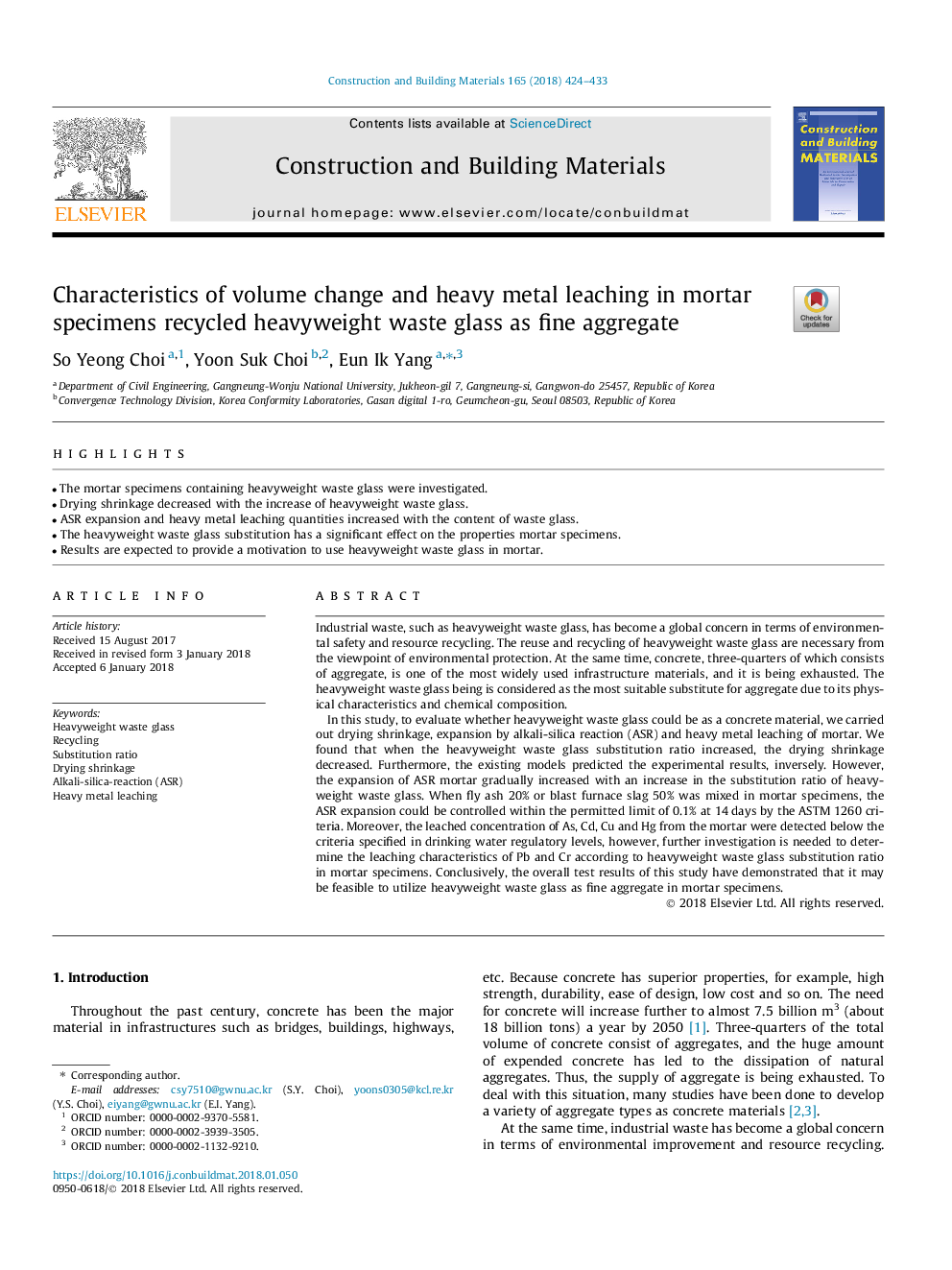| Article ID | Journal | Published Year | Pages | File Type |
|---|---|---|---|---|
| 6715632 | Construction and Building Materials | 2018 | 10 Pages |
Abstract
In this study, to evaluate whether heavyweight waste glass could be as a concrete material, we carried out drying shrinkage, expansion by alkali-silica reaction (ASR) and heavy metal leaching of mortar. We found that when the heavyweight waste glass substitution ratio increased, the drying shrinkage decreased. Furthermore, the existing models predicted the experimental results, inversely. However, the expansion of ASR mortar gradually increased with an increase in the substitution ratio of heavyweight waste glass. When fly ash 20% or blast furnace slag 50% was mixed in mortar specimens, the ASR expansion could be controlled within the permitted limit of 0.1% at 14â¯days by the ASTM 1260 criteria. Moreover, the leached concentration of As, Cd, Cu and Hg from the mortar were detected below the criteria specified in drinking water regulatory levels, however, further investigation is needed to determine the leaching characteristics of Pb and Cr according to heavyweight waste glass substitution ratio in mortar specimens. Conclusively, the overall test results of this study have demonstrated that it may be feasible to utilize heavyweight waste glass as fine aggregate in mortar specimens.
Related Topics
Physical Sciences and Engineering
Engineering
Civil and Structural Engineering
Authors
So Yeong Choi, Yoon Suk Choi, Eun Ik Yang,
